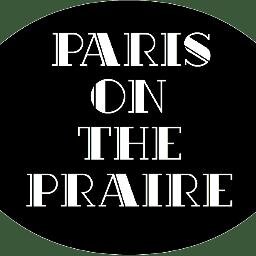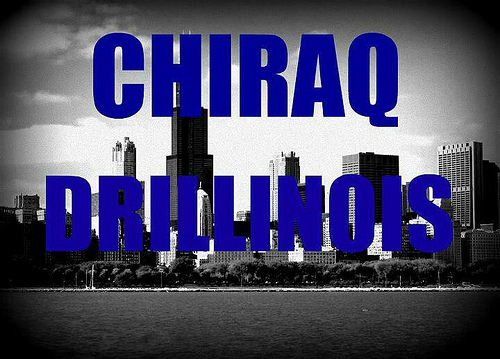http://news.aag.org/2015/03/whats-in-a-nickname/





Chicago goes by many nicknames—from the widely recognized “Windy City” and “Second City” to more obscure and seemingly puzzling associations, such as “Paris on the Prairie” and “The Smelly Onion.” Nicknames are important branding strategies used by civic boosters, and Chicago’s namesakes are frequently employed to market the city and its surrounding region as “The Jewel of the Midwest” and “Heart of America.” At the same time, urban monikers can arise from the wider public and they have sometimes been used to draw attention to negative qualities of Chicago life. With the help of a NWS meteorologist and social media, the city was rechristened “Chi-beria” during the record-breaking cold weather of 2013-14. The Wall Street Journal identified Chicago as “Beirut by the Lake” when reporting on the intense political infighting on the city council in the early- and mid-1980s.


Popular culture and artistic expression are important sources of nicknames. Some of Chicago’s best-known monikers are found in poems, such as “City on the Make” from Nelson Algren and “City of Big Shoulders” from Carl Sandburg. Other Chicago nicknames have originated from songs. Frank Sinatra popularized “That Toddling Town” and “My Kind of Town.” Famous blues artist Robert Johnson’s “Sweet Home” captured the emotional geography of the Great Migration of African Americans from the racial oppressive South to presumably better conditions in Chicago. As of late, the local rap/hip-hop music scene has given rise to “Chiraq,” a controversial mash-up of the place names Chicago and Iraq. Chiraq has become shorthand for capturing the life and death struggles and feelings of anger and alienation that poor people of color experience within the city. The nickname stands in marked contrast to the optimism and sense of belonging found in Johnson’s portrayal of Chicago as home.

The emergence of Chiraq is an opportunity to think about the politics of how places are represented and made meaningful within the wider cultural arena of music and naming—both in general and specific to Chicago. City nicknames might appear at first glance to be gimmicky or superficial. Yet, we would suggest that this form of naming, like all toponymic practices, plays a critical role in socially constructing and contesting the identities of urban places and the people associated with those places. As increasingly suggested in research, place names are not confined to official nomenclature on maps, but also include competing, vernacular systems of naming. Chicago’s many nicknames provide insight into the different ways that social actors and groups frame and reconfigure the image of the city for visitors, residents, and the wider world. The case of Chiraq encourages us to recognize that historically marginalized groups such as African Americans can harness the power of naming to articulate a sense of place and a resistant place identity on their own terms and in their own words.

Music is an important signifier of place and the cultural power of hip-hop, or any musical genre for that matter, is the way in which it originates from and gives voice to the specific lived experiences and struggles of its artists. The term Chiraq was coined by local musician, King Louie, and debuted in his 2009 track “Chiraq Drillinois.” Rappers born and reared in the impoverished south and west sides of Chicago have collectively popularized the nickname, most notably Chief Keef, Young Chop, Lil Reese, and Lil Durk. This group of artists along with many others formed what is known as “Drill Music,” a subgenre of hip-hop known for its grim, violent depictions of Chicago street life, especially the Englewood neighbor. Chief Keef drew attention to the Drill music scene in late 2011 with a homemade music video released on YouTube entitled Bang. In 2012, after being signed to Interscope, he released his first album, Finally Rich, which pushed Drill music into the mainstream. In April of 2014, Chiraq become even more nationally recognized when hip-hop star Nicki Minaj featured Drill rapper Lil Herb on a single, titled Chi-Raq.

Chiraq can be understood in part by looking at the lyrics and the commentary that describe it. Lyrics written and performed by Drill artists frequently refer to rampant murder and the wide availability of guns, along with frequent references to Chicago as a militarized and besieged landscape. As King Louie put it in his seminal track: “rocket rocket gun fire, you hear that killer noise, this is…Chiraq Drillinois…we drillen, we killen…” In the recently released track Gang Members, Chief Keef and three other Drill artists employ sound-bites from televisions new reports about crime mixed with their own flows to describe the astounding level of violence and apathy they encounter in Chicago. Because the production and online posting of home-made music videos is a hallmark of Drill artists, Chiraq has opened up a space in social media for sharing the comments, reactions, and life experiences of locals as well as political discussions from observers/listeners well beyond Chicago.
For some commentators, Chiraq exposes the contradictions of living in a country that spends massive amounts of money to intercede in conflicts abroad but places less priority on the “war zones” at home, especially when victims are too easily reduced to the collateral damage of gang violence in minority neighborhoods. Some observers, including the FBI, attribute high levels of violence in Chicago to gang activity, although anecdotal evidence suggests the situation is more complex.Others argue that it was government efforts to dissolve gangs and close down federally subsidized housing that have destabilized communities and the support networks provided by gangs, thus putting already vulnerable African Americans further at risk and intensifying their struggle to survive (1:31-2:23).
As journalists report, a sense of fatalism pervades some of neighborhoods most harshly affected by high levels of violence. When interviewed, twenty-year old Chicago resident Jamal stated that he didn’t expect to live much longer after sharing that only two of his childhood friends were still alive. This message of hopelessness is echoed in an interview with anotherlocal resident who goes further to make a suggestion on how Chiraq might be changed, “I believe if people had availability of service, and something to do, more so in the community, if it was more… something to look forward to, maybe it [the violence] would subside” (11:57-12:13).
Renaming Chicago as Chiraq represents a form of resistance initiated by youth who are experiencing a lifetime of hyper-segregation, chronic poverty, poor education in crowded classrooms, and a regular loss of loved ones to both prison cells and gunshots. The nickname’s power, politically, is the way in which naming functions as a form of shaming, a way of challenging Chicagoans, especially those in power, to consider the harsh and dangerous realities of life that are so clearly at odds with the city’s positive promotional image. When a local news station interviewed Chicagoans about their opinion of the Chiraq label, shame was clearly an underlying feeling, as exemplified by this quote, “I don’t want them to think of Chicago, our beautiful city as a war zone.” The willingness of some residents to deny the extreme violence in Chicago, and in fact make excuses for it, are evident in the words of another quoted resident: “It’s a little violent, but then again it’s Chicago…I mean it’s one of the best places in the world.”
Chicago has a long and documented history of police violence against youth. Not surprisingly, the lyric of “F*** the (insert any derogatory term for police officer)” is frequently associated with Chiraq and it is the most blatant way that Drill artists shame local authorities and implicate the state in making Chicago a war zone. But the shaming goes beyond lyrics and musical performance, manifesting itself in the commentary attached to YouTube videos. For example, one observerwrote: “Apparently the police don’t give a f*** and are encouraging it…guess that’s why they inherited the raq in chi.” Comments such as these are not simply directed locally. The capacity of the Chiraq nickname to shame and evoke condemnation is also being exercised nationally. When 82 people were shot over the July 4, 2014 weekend in Chicago, ajournalist asked of the city’s most famous resident: “Obama, Why Aren’t You in Chiraq?
Due in part to the exposure given by hip-hop star Nicki Minaj, Chiraq is growing in popularity as a point of identity and even a badge of honor among segments of Chicago’s African American community. The nickname can now be founddisplayed on an array of posters, T-shirts, and hats—many of which also display images of automatic rifles and handguns. Enthusiasts have gone as far as appropriating the icons of the city’s famed sports franchises, drawing a gas mask on the Bulls’ red charging bull and inserting the name Chiraq in place of “Cubs” within the baseball team’s logo. The growing popularization of Chiraq has sparked opposition to the nickname. Anti-Chiraq activists, including ex-gang members, have argued that Drill artists glorify and encourage violence, even as they speak to the truth of that violence. Some opponents assert that referring to communities as war zones creates a “punishment mentality” that limits how people think about the solutions to the systemic inequality and racism in Chicago. In the words of one commentator, “War can further dehumanize black bodies and count them as casualties.”
Not everyone in the Chicago’s black community has embraced the Chiraq moniker or used it in the same way as Drill artists. K’Valentine is part of a small but vocal group of female rappers using their music to speak out publicly against the nickname. She wrote and performed a track entitled Anti-Chiraq, a loose remix of Nicki Minaj and Lil Herb’s famous Chi-Raq track. Alonzo Jackson, a local fashion designer, sells anti-Chiraq shirts. By scratching out, literally and figuratively, the controversial nickname on apparel, Jackson hopes to alter the direction of the public conversation. On this point, he stated: “So don’t even call it [the city] Chiraq because the power of the tongue and you speak that, it’s like you’re embracing it and we don’t like that at all.”
Chicago activist Julien Drayton founded RIP Chiraq Foundation in 2012 to advocate for peace and to provide employment and career training to underprivileged people in the city. Yet, Drayton’s call for “No More Chiraq” is not necessarily a call to ban the nickname, but actually a call to end the structural conditions (poverty, joblessness, discrimination, and gun proliferation) that have given rise to Chicago’s violence, and he speaks pointedly to a goal of seeing the city growing “out of the shadow” of high death tolls. Chiraq encompasses many complicated layers of resistance and the name has clearly become part of the lexicon for framing discussions of problems in Chicago and broader urban America, even if everyone cannot agree on what the term means, what it is accomplishing, or whether it should be invoked at all.
Chicago is a city of conflicting identities depending on one’s social and geographic position in its networks of power and resources. Chiraq is not merely an alternative nickname for Chicago or hip-hop styling or personae; rather it marks larger geographies of exclusion, violence, and resistance within the city. Chiraq highlights important relations between local music, social media, and the racial and class politics of naming and claiming cities. Chiraq prompts us as geographers to consider the broader social and economic struggles at work in the cities where we hold meetings, helping us move toward a more critical and empathetic understanding of place that is perhaps not possible within conference hotels and session rooms.
No comments:
Post a Comment